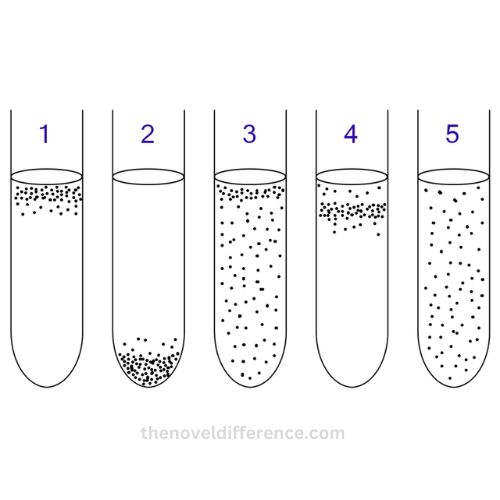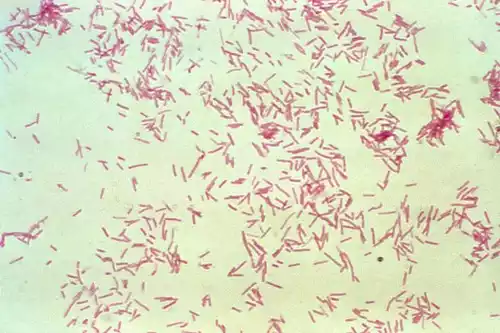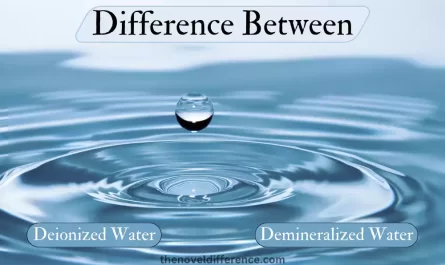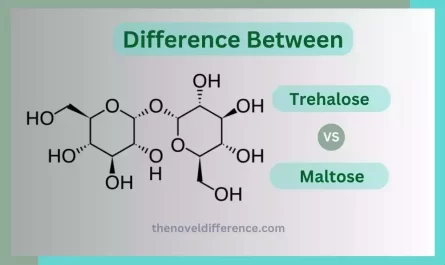Microorganisms comprise a wide range of living organisms that are all over Earth. They can be divided into several categories according to their metabolic processes. One of the most important classifications of microorganisms consists of their requirements for oxygen.
Microorganisms are classified as essential aerobes, obligatory anaerobes, and facultative anaerobes or microaerophiles according to their requirements for oxygen. In this article, we’ll concentrate on the differences between obligate and non-obligate anaerobes.
The Importance of Obligate Aerobes and Obligate Anaerobes
Understanding the contrast between obligate aerobes and obligate anaerobes is crucial in fields like medicine and ecology.
Why it’s essential:
- In Medicine: It helps diagnose and treat infections caused by different types of bacteria. Some need oxygen to survive (obligate aerobes), while others can only thrive without oxygen (obligate anaerobes). Knowing this helps doctors choose the right antibiotics and treatment strategies.
- Antibiotics: Recognizing bacteria’s oxygen needs is vital for determining which antibiotics will work. Some antibiotics need oxygen to be effective, so knowing if the bacteria are obligate anaerobes is essential for choosing the right treatment.
- Infection Control: Maintaining the right oxygen levels can prevent or manage infections. Oxygen-rich environments help control obligate aerobes, while oxygen-depleted ones are needed for obligate anaerobes.
- Ecology: It helps understand microbial communities in different environments. For example, obligate anaerobes are crucial in breaking down organic matter in environments without oxygen, affecting ecosystem dynamics.
- Environmental Applications: It’s essential in areas like wastewater treatment. The presence of obligate anaerobes indicates the effectiveness of anaerobic digestion, while obligate aerobes suggest the need for aerobic treatment.
Understanding these differences benefits medical care, treatment choices, ecological research, and various environmental applications.
Characteristics of Obligate Aerobes
Obligate aerobes are microorganisms that rely on oxygen for their growth and survival. They possess specific traits that set them apart from other microorganisms.
Key characteristics:
- Oxygen Requirement: These microorganisms absolutely need oxygen for their metabolic processes. Oxygen is their final electron acceptor in cellular respiration, allowing them to generate energy in the form of ATP.
- Growth Conditions: Obligate aerobes thrive in environments rich in oxygen. They require atmospheric or dissolved oxygen for growth. The availability of oxygen directly impacts their growth rate.
- Oxygen Utilization: They primarily use aerobic respiration for energy production. This involves breaking down organic molecules in the presence of oxygen to produce ATP efficiently.
- Aerobic Respiration: They conduct aerobic respiration, completely breaking down organic compounds to release energy. This process results in the production of carbon dioxide and water, with electrons passing through the electron transport chain to generate ATP.
- Growth Rate: Obligate aerobes generally grow faster than other microorganisms due to their high energy yield through aerobic respiration.
- Oxygen Tolerance: They have developed protective mechanisms to counter the toxic effects of oxygen, using enzymes to neutralize reactive oxygen species.
- Examples: Mycobacterium tuberculosis, Pseudomonas aeruginosa, and certain fungi and yeasts are examples of obligate aerobes.
Understanding these traits is valuable in microbiology, medicine, and biotechnology. It helps with identifying and cultivating specific microorganisms, comprehending their metabolic capabilities, and creating suitable laboratory growth conditions. This knowledge is relevant in clinical diagnostics, infection control, and treatments targeting oxygen-dependent microorganisms.

Oxygen Dependence
Oxygen dependence is a critical feature of obligate aerobes. These tiny organisms must have oxygen to survive, grow, and function properly.
Here are the key points:
- Must-Have Oxygen: Obligate aerobes absolutely need oxygen to live and do their work. Without oxygen, they can’t grow or function.
- Oxygen as Fuel: Oxygen is like their fuel. It’s the last stop in a chain of reactions that generate energy for them, known as aerobic respiration. This process produces ATP, the cell’s energy source.
- Aerobic Respiration: They use a process called aerobic respiration, which involves fully breaking down organic substances with oxygen. This is how they get the most energy from their food.
- Oxygen’s Impact: Whether there’s oxygen around or not really affects these organisms. They thrive where oxygen is high and struggle without it.
- Dealing with Oxygen: To handle oxygen’s potentially harmful effects, they’ve developed enzymes like superoxide dismutase, catalase, and peroxidases. These protect them from damage caused by reactive oxygen species (ROS).
- Optimizing Oxygen: Some obligate aerobes can choose where they grow by utilizing different oxygen levels.
Understanding this oxygen dependence is important in microbiology, medicine, and biotechnology. It helps in creating the right conditions for their growth and experiments.
Growth Conditions
Obligate aerobes have specific needs for their growth:
- Oxygen Required: They love places with lots of oxygen. They can’t grow without it, so the more oxygen, the better.
- Aerobic Environments: They thrive in areas with plenty of oxygen, like the air, the topsoil, and surfaces exposed to air.
- Food: Just like any living thing, they need nutrients to grow. This includes things like carbs, proteins, and minerals.
- Temperature: Different species like different temperatures. Some are happy at room temperature, while others prefer warmer conditions, like our body temperature.
- pH Levels: The acidity or alkalinity of their environment can affect their growth. Different species have their preferences.
- Sterile Conditions: It’s important to keep everything sterile when growing them to avoid contamination.
- Using Oxygen Levels: Some of them can adapt to different environments by choosing where oxygen levels suit them best.
Understanding these growth conditions is crucial for growing them in labs and understanding how they work in nature and in our bodies.
Characteristics of Obligate anaerobes
Obligate anaerobes are tiny living organisms that can’t survive in the presence of oxygen. They have distinct traits that set them apart from other types of microorganisms.
Here are the main features of obligate anaerobes:
- Sensitivity to oxygen: They’re highly sensitive to oxygen. Exposure to it can harm and even kill them. They lack the necessary enzymes to neutralize reactive oxygen species (ROS) produced in the presence of oxygen.
- Preferred environments: They thrive in places with low or no oxygen, like deep soil, intestines, or deep-sea sediments.
- Energy production: They use different ways to create energy without oxygen. These methods provide less energy compared to aerobic respiration.
- Electron acceptors: Instead of oxygen, they use other substances like nitrate, sulfate, or carbon dioxide.
- ATP production: They produce less ATP than other organisms, affecting their growth rate and efficiency.
- Metabolic pathways: They have various ways of processing substances, like producing methane or carrying out fermentation.
- Examples: Some include Clostridium botulinum and Bacteroides fragilis, often found in oxygen-deprived environments like the human gut.

Understanding these traits is crucial in fields like microbiology and medicine, helping us recognize, study, and manage these unique microorganisms in various ecosystems and diseases.
Oxygen sensitivity
Oxygen sensitivity is a critical trait of obligate anaerobes, making them unable to survive in the presence of oxygen.
Here’s what you need to know about their sensitivity:
- Lack of protective enzymes: They lack enzymes like catalase and superoxide dismutase, making them unable to detoxify reactive oxygen species efficiently.
- Harmful effects: Oxygen can damage their cells and disrupt their metabolism, leading to their death.
- Growth inhibition: Exposure to oxygen can slow down or completely stop their growth.
- Protective mechanisms: They produce substances that can counter the damaging effects of oxygen.
- Oxygen exclusion: They live in environments with low oxygen levels, such as deep soils or animal intestines.
- Cultivation techniques: Specific methods and tools are necessary to create oxygen-free conditions for their study.
Understanding their sensitivity to oxygen is crucial for their study and practical applications, especially in diagnosing and treating infections caused by these microorganisms.
Growth conditions
Obligate anaerobes require specific conditions for growth due to their intolerance to oxygen.
Here’s what you need to know about their growth conditions:
- Oxygen-free environment: They need environments with no oxygen, which can be created using specialized equipment.
- Anaerobic culture techniques: Special methods and growth media are used for their cultivation.
- Nutrient availability: They require organic compounds as their food source.
- Temperature and pH: Their optimal growth conditions can vary depending on the species.
- Sterility: Maintaining sterile conditions during cultivation is crucial.
- Slow growth rates: They grow slower than other microorganisms.
- Anaerobic indicators: Chemicals can be added to the growth media to confirm the absence of oxygen.
Understanding these specific growth conditions is essential for studying and managing obligate anaerobes effectively, especially in clinical settings.
Key Differences between Obligate Aerobes and Obligate Anaerobes
Obligate aerobes and obligate anaerobes are microorganisms with distinct oxygen requirements, and here’s what sets them apart:
1. Oxygen Dependence:
- Obligate Aerobes: These microorganisms need oxygen to survive. They use it for energy production through aerobic respiration.
- Obligate Anaerobes: These microorganisms can’t tolerate oxygen and rely on alternative pathways for energy production when oxygen is absent.
2. Sensitivity to Oxygen:
- Obligate Aerobes: Oxygen doesn’t harm them; they have mechanisms to deal with its byproducts.
- Obligate Anaerobes: Oxygen is harmful to them; they lack protective enzymes, so exposure can damage their cells.
3. Preferred Environments:
- Obligate Aerobes: They thrive in oxygen-rich environments.
- Obligate Anaerobes: They prefer oxygen-depleted places, like deep soil or animal intestines.
4. Metabolic Pathways:
- Obligate Aerobes: Use aerobic respiration, relying on oxygen as the final electron acceptor.
- Obligate Anaerobes: Employ alternative methods like anaerobic respiration or fermentation when oxygen is scarce.
5. Examples:
- Obligate Aerobes: Think of bacteria like Pseudomonas aeruginosa and fungi like Aspergillus niger.
- Obligate Anaerobes: Examples include Clostridium botulinum, Bacteroides fragilis, and Methanobacterium species.
Significance and Implications of Aerobes and Anaerobes
Knowing the distinctions between obligate aerobes and obligate anaerobes holds great importance and can have far-reaching effects across different fields.
Here’s why it matters:
- Microbiology and Ecology: Understanding how much oxygen microorganisms need and how they metabolize helps us grasp their roles in the environment. It aids in understanding how they impact ecosystems, nutrient cycles, and biodiversity. This knowledge also helps predict how changes in oxygen levels can affect microbial diversity and the environment.
- Medical and Clinical Applications: Knowing the differences between these two types of microorganisms is crucial in clinical settings. It helps diagnose and treat infections, especially those caused by anaerobic pathogens. Proper identification allows for targeted treatment and management of infections.
- Biotechnology and Industrial Applications: Knowing the oxygen needs of microorganisms is crucial for designing and optimizing bioreactors and fermentation processes. It helps choose the right conditions to maximize product yields in various industrial processes.
- Environmental and Climate Sciences: The differences between these microorganisms are important for understanding global carbon and nitrogen cycling. Their metabolic processes influence greenhouse gas emissions and absorption, affecting climate change dynamics.
- Evolutionary Biology: Understanding the differences reflects how these microorganisms have adapted to their environments over time. Studying them sheds light on the history of life on Earth and the various strategies microorganisms use to survive in different habitats.
Understanding these differences is key to advancing our understanding of microorganisms. It helps us comprehend their functions, develop cultivation strategies, and apply this knowledge to various scientific fields, including healthcare, biotechnology, and environmental science.
In summary
Obligate aerobes and obligate anaerobes are two different types of organisms with varying oxygen needs. Obligate aerobes must have oxygen for survival and perform aerobic respiration, while obligate anaerobes cannot exist in the presence of oxygen and perform anaerobic respiration.
These organisms are vital in environmental, medical, and industrial contexts. Recognizing the contrast between them helps us grasp their significance in diverse areas of research. If you require additional information or have questions, feel free to ask in the comments below.




